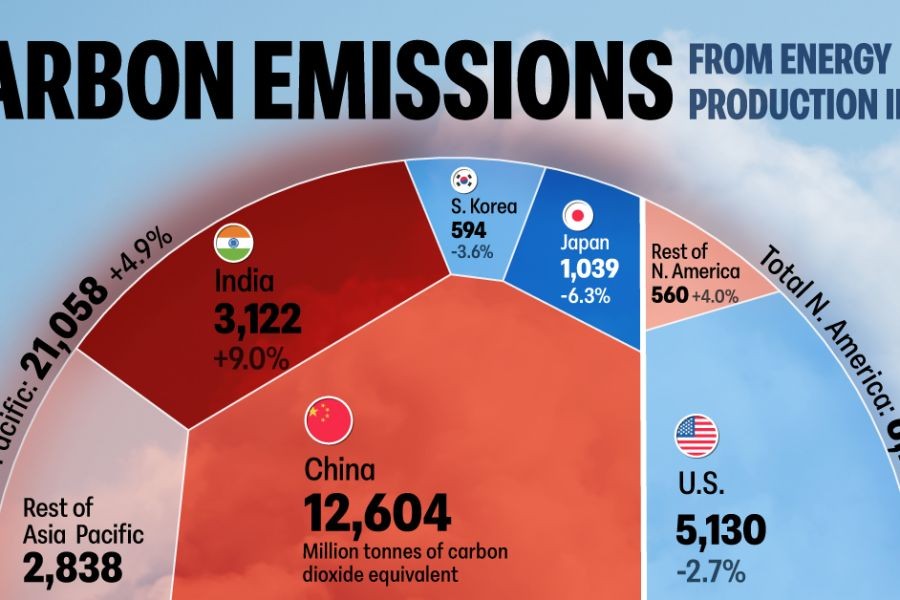In recent years, New Zealand has positioned itself as a leader in sustainable practices, particularly in transportation. However, despite the government's commitment to reducing carbon emissions and enhancing public transport infrastructure, many argue that these efforts are merely a "Band-Aid" solution. This article delves into the depth of New Zealand's sustainable transportation strategies, evaluating their effectiveness and examining their implications for the commercial real estate sector.
Understanding New Zealand’s Sustainable Transportation Initiatives
New Zealand's transportation sector accounts for approximately 20% of the country's total greenhouse gas emissions (Source: Ministry for the Environment). In response, the government has implemented several initiatives, including the promotion of electric vehicles (EVs), enhancing public transport, and investing in cycling infrastructure. These efforts align with New Zealand's broader goal of achieving a net-zero carbon economy by 2050.
Pros & Cons of Current Initiatives
✅ Pros:
- Emission Reduction Potential: Encouraging the use of EVs and public transport can significantly reduce the carbon footprint.
- Improved Urban Livability: Enhanced public transport can lead to less congestion and better air quality in major cities.
- Economic Opportunities: The EV market provides new business opportunities and could stimulate job creation in the auto sector.
❌ Cons:
- Infrastructure Challenges: The current infrastructure may not support the rapid adoption of EVs, particularly in rural areas.
- High Initial Costs: Transitioning to sustainable transportation typically involves high upfront expenses for both the government and consumers.
- Limited Impact on Freight Transport: Current initiatives largely overlook the freight sector, which is a significant contributor to emissions.
Case Study: Wellington’s Public Transport Overhaul
Problem: Wellington, the capital city of New Zealand, faced severe congestion and pollution issues due to inadequate public transport options.
Action: The city introduced new electric buses and expanded its cycling network, aiming to reduce car usage by 20%.
Result: Within two years, public transport ridership increased by 15%, and carbon emissions decreased by 10%.
Takeaway: Comprehensive public transport upgrades can significantly impact urban congestion and emissions, but scalability remains an issue in less urbanized regions.
Comparative Analysis: Global Insights and Local Application
Globally, cities like Oslo and Amsterdam have successfully integrated sustainable transport solutions, resulting in reduced emissions and improved quality of life. Oslo's approach, which includes zero-emission zones and subsidized EVs, offers a blueprint for New Zealand. However, the challenge lies in adapting such models to fit New Zealand's unique geographical and economic landscape.
For New Zealand, balancing urban and rural needs is critical. While cities might benefit from advanced public transport networks and EV infrastructure, rural areas require tailored strategies that account for longer travel distances and limited access to charging stations.
Integrating Commercial Real Estate Considerations
For commercial real estate brokers, sustainable transportation developments can influence property values and investment decisions. Proximity to efficient public transport can enhance the attractiveness of commercial properties, potentially leading to higher rental incomes and lower vacancy rates.
Moreover, as sustainability becomes a key consideration for investors, properties with access to green transport options may see increased demand. This trend is supported by data from the New Zealand Green Building Council, which indicates that green buildings command a premium in both rental and sales markets.
Debunking Common Myths Around Sustainable Transportation
- Myth: Sustainable transportation is too costly for widespread adoption. Reality: Long-term savings from reduced fuel costs and government incentives can offset initial expenses.
- Myth: Public transport improvements only benefit urban areas. Reality: Rural areas can benefit from integrated transport systems that connect communities and enhance mobility.
- Myth: EVs are the sole solution for reducing transportation emissions. Reality: A holistic approach, including public transit and cycling, is necessary for significant impact.
The Future of Sustainable Transportation in New Zealand
Looking ahead, New Zealand's sustainable transportation landscape will likely evolve with technological advancements and policy shifts. A report by the Ministry of Business, Innovation, and Employment (MBIE) suggests that by 2030, autonomous vehicles could play a significant role in reducing emissions, while AI-driven transport systems might enhance efficiency and user experience.
Moreover, as global trends shift towards sustainability, New Zealand's commercial real estate sector must adapt. Properties that align with sustainable transport initiatives will likely see increased demand, while those that don't may struggle to attract tenants and investors.
Conclusion: Final Takeaways & Call to Action
New Zealand's efforts in sustainable transportation are commendable, yet they require further development to address broader challenges effectively. For commercial real estate brokers, understanding these dynamics is crucial. By aligning investment strategies with sustainable transport trends, brokers can maximize property value and meet the growing demand for eco-friendly spaces.
Are you ready to capitalize on these opportunities? Stay informed and proactive in your strategies to ensure long-term success in New Zealand's evolving real estate market.
People Also Ask (FAQ)
- How does sustainable transportation impact commercial real estate in New Zealand? Sustainable transportation enhances property accessibility and desirability, potentially increasing value and reducing vacancy rates.
- What are the biggest misconceptions about sustainable transportation? Many believe it’s too costly and primarily urban-focused, but evidence shows rural areas can benefit, and long-term savings are significant.
- What are the best strategies for implementing sustainable transportation? Experts recommend a combination of public transport upgrades, EV incentives, and cycling infrastructure to create a comprehensive system.
Related Search Queries
- Sustainable transportation solutions in New Zealand
- Impact of sustainable transport on real estate
- Electric vehicles market in New Zealand
- Public transport improvements in New Zealand
- Real estate investment and sustainable transport



























